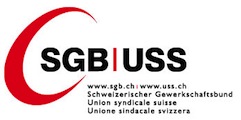Publications des institutions partenaires
On Privacy
This book explores the Janus-faced features of privacy, and looks at their implications for the control of personal information, for sexual and reproductive freedom, and for democratic politics. It asks what, if anything, is wrong with asking women to get licenses in order to get pregnant and have children, given that pregnancy and childbirth can seriously damage your health. It...
Institution partenaire
English / 01/01/2012
The Associative Dimension of Issue Ownership
Issue ownership is commonly conceptualized as multidimensional, consisting of a “competence” dimension and an “associative” dimension. Because existing operationalizations of issue ownership tap only the former dimension, we focus on associative issue ownership: the spontaneous identification between specific issues and specific parties in the minds of voters. Survey evidence from...
Institution partenaire
English / 01/01/2012
Recruitment, Retention and Exit from Union Membership. An Analysis of Member Flows in Swiss Union Locals
This article enquires into the causes of union growth and decline by analysing flows in and out of membership at the level of 70 Swiss union locals over 2006–2008. Gross flows in union membership are much larger than the resulting net changes: annual membership turnover of 10 per cent is a surprisingly constant feature across unions. Net changes in membership are primarily determined...
Institution partenaire
English / 01/01/2012
The (Partisan) Role of the Press in Direct Democratic Campaigns: Evidence from a Swiss Vote on European Integration
This article analyzes the role of the press in direct democratic campaigns. The paper argues the press has a dual role: On news pages, newspapers ought to inform citizens about the issue positions and frames of the pro and con camps in a balanced way. In editorials, newspapers act as political advocates that promote their own issue frames and try to shape public opinion through...
Institution partenaire
English / 01/01/2012
Crises in the Atlantic Alliance. Affect and Relations among NATO Members
Through a theoretical and empirical examination of the 1956 Suez Crisis, the 1966 NATO crisis, and the 2003 Iraq crisis, Eznack explores the connections between affect and emotion, the occurrence of crises, and the repair of those crises in close allies' relationships. This book constructs a new history and theory of the workings of alliances and provides a new perspective on...
Institution partenaire
English / 01/01/2012
Neoliberalising adaptation to environmental change: foresight or foreclosure?
Institution partenaire
English / 01/01/2012
International Intellectual Property Arbitration : How to Use it Efficiently?
Institution partenaire
English / 01/01/2012
Can Alternative Dispute Resolution Mechanisms Become the Default Method for Solving International Intellectual Property Disputes?
Institution partenaire
English / 01/01/2012
The 33rd America's cup judicial and arbitral decisions
Institution partenaire
English / 01/01/2012
An essential brick in the building of European copyright : regulation of copyright transactions
Institution partenaire
English / 01/01/2012
Arbitrating international intellectual property disputes: time to think beyond the issue of (non-)arbitrability = L’arbitrage des litiges internationaux de propriété intellectuelle : la nécessité de réfléchir au-delà de la question de (non-)arbitrabilité
Institution partenaire
English / 01/01/2012
Service Level Agreements as a Service - Towards Security Risks Aware SLA Management
Cloud computing has matured to become a valuable on demand alternative to traditional ownership models for the provisioning of services, platforms and infrastructure. However, this raises many issues for Governance, Risk and Compliance (GRC) and in particular in terms of Information Systems Security Risk Management (ISSRM). Considering such issues lack attention and knowledge,...
Institution partenaire
English / 01/01/2012
Towards Cloud Computing SLA Risk Management: Issues and Challenges
Cloud Computing has become mainstream technology offering a commoditized approach to software, platform and infrastructure as a service over the Internet on a global scale. This raises important new security issues beyond traditional perimeter based approaches. This paper attempts to identify these issues and their corresponding challenges, proposing to use risk and Service Level...
Institution partenaire
English / 01/01/2012
Semantic alignment of documents with 3D city models
In urban semantic digital libraries, users need to access heterogeneous types of resources in order to achieve a given task. Contextualisation is known to increase the understanding of documents. With the use of 3D city models, we propose an alignment model that correlates, using the semantic annotations, the different resources of the repository with the different objects contained...
Institution partenaire
English / 01/01/2012
Precise information retrieval in semantic scientific digital libraries : CEUR doctoral symposium proceedings
When scientists or engineers are looking for information in document collections, or on the web, they generally have a precise ob jec- tive in mind. Instead of looking for documents ”about a topic T ”, they rather try to answer specific needs such as finding the definition of a con- cept, finding results for a particular problem, checking whether an idea has already been tested, or...
Institution partenaire
English / 01/01/2012
Inferring scientific knowledge from background fragments
Scientists, when they read, chain document together. They reuse those chains for understanding a problem, for advancing in their research, or for writing. Systems such as Google Scholar, PubMed, Web of Knowledge, use references contained into scientific documents to link those documents together, but they are using only direct citation. More explicitly, document "a" will...
Institution partenaire
English / 01/01/2012
An ontology of 3D visualization techniques for enriched 3D city models
Models, which represent in 3 dimensions the geometric elements of a city, are called 3D city models. Those models are used for an intended wide range of applications beyond mere visualization. Such uses are made possible by enriching the geometrical aspects with urban or environmental data that cannot be perceptible to a user without a visual abstraction. Using such models implies...
Institution partenaire
English / 01/01/2012
A decentralized approach for detecting dynamically changing diffuse event sources in noisy WSN environments
Institution partenaire
English / 01/01/2012
Towards an ontology based large repository for managing heterogeneous knowledge resources
Institution partenaire
English / 01/01/2012
Pages
Le portail de l'information économique suisse
© 2016 Infonet Economy












